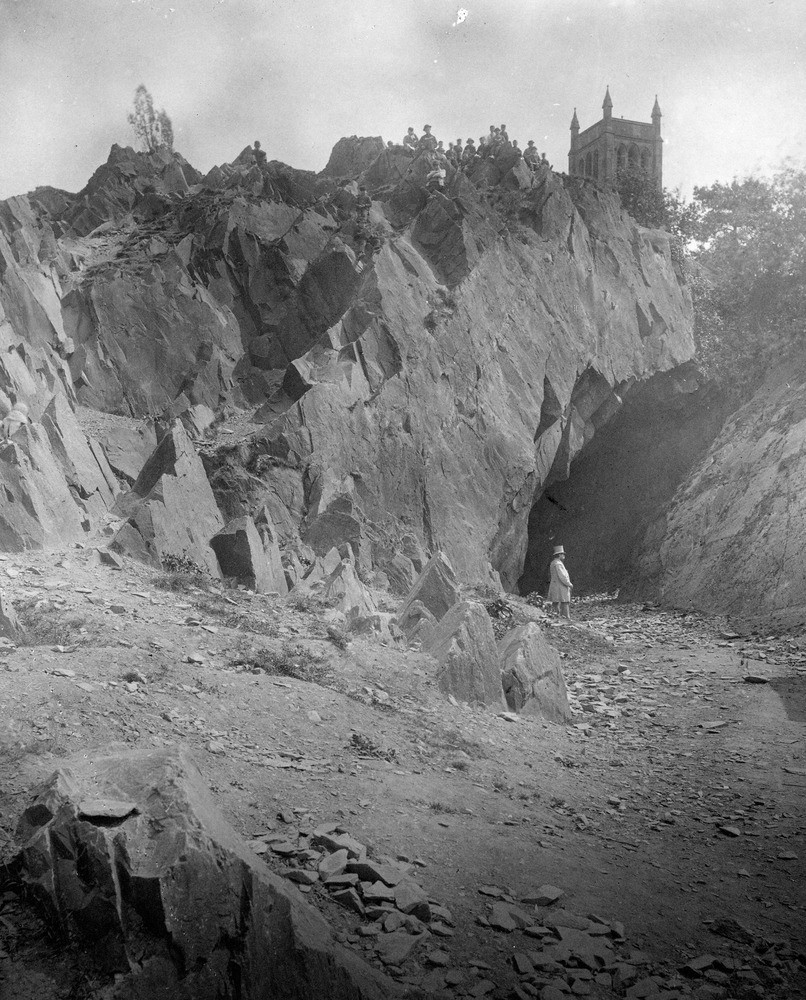Forest Rock
A secluded spot among the picturesque village of Woodhouse Eaves.

(C) UKRI – BGS
Forest Rock is the site of a small quarry, used to extract rock for the nearby buildings in this part of Woodhouse Eaves.
The outcrops at the site actually comprise two different rocks types. The older Bradgate Formation is around 560 million years old, and was deposited in deep marine environments as layers of siltstones and mudstones. It has a purple-grey colour. The younger unit is the Stable Pit Member, from the Cambrian period, and is around 530 million years old. It can be recognised by being sandier than the Bradgate Formation, often with a creamy, slightly yellow colour.
Can you find the boundary between the two units? It can be hard to spot, but its an important horizon. As there is an age difference between the two rocks types – around 30 million years of missing time and rock – we call this boundary an unconformity.
The Bradgate Formation was the preferred rock type to quarry here, and so you can see where this has selectively been extracted. Take a look at some of the nearby buildings and you will be able to see how this stone has been used. Good examples are the nearby old School House, and the church of St. Paul.